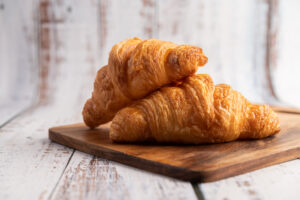There’s something undeniably magical about stepping into a French bakery. The aroma of butter caramelizing in a flaky croissant, the vibrant hues of macarons lined like edible jewels, and the delicate crunch of a freshly baked baguette—these sensory experiences have made French pastries a global obsession. From Parisian cafés to patisseries in Tokyo, the allure of French bakery classics transcends borders. This article invites you on a journey through the heart of pâtisserie culture, exploring iconic treats, their rich histories, and practical tips for recreating them in your own kitchen.
Why Does French Pâtisserie Captivate the World?
The legacy of French baking stretches back centuries, rooted in a culture that elevates food to an art form. In medieval times, guilds regulated the production of bread and pastries, laying the groundwork for the precision and craftsmanship seen today. By the 19th century, figures like Marie-Antoine Carême and Auguste Escoffier transformed pastry-making into a haute cuisine discipline, blending creativity with technical rigor.
One fascinating tale is the origin of the Paris-Brest, a wheel-shaped choux pastry filled with praline cream. Created in 1910 to commemorate the Paris-to-Brest bicycle race, its circular design mirrors a bicycle wheel—a nod to the event’s spirit. Stories like these highlight how French desserts are intertwined with history, making every bite a taste of tradition.
Iconic French Pastry Items: From Croissants to Kouign-Amann
French bakeries are treasure troves of diversity, offering everything from airy viennoiserie to decadent tarts. Let’s explore the stars of the show.
The Quintessential Croissant
No symbol of French baking is as universally beloved as the croissant. Its golden, buttery layers are achieved through laminated dough, a labor-intensive process of folding butter into dough repeatedly. Though often associated with France, the croissant’s origins trace back to Austria. French bakers perfected it in the 19th century, turning it into a breakfast staple. Today, over 6 billion croissants are consumed annually in France alone—proof of their timeless appeal.
Macarons: A Colorful Delight
Macarons are a test of a baker’s skill. These almond meringue cookies, sandwiched with ganache or buttercream, require precise ratios and technique. The key to their signature “feet”—the ruffled base—is resting the piped batter before baking to form a skin. While classic flavors like vanilla and raspberry reign supreme, modern variations matcha, salted caramel, and even foie gras show how this treat continues to evolve.
Choux Pastry Wonders
Choux pastry, or pâte à choux, is the foundation of éclairs and profiteroles. When baked, the high moisture content creates a hollow center, perfect for filling with crème pâtissière or whipped cream. Chef Olivier Bajard, a Meilleur Ouvrier de France, famously crafts intricate choux sculptures, proving its versatility. Whether topped with glossy chocolate or powdered sugar, these pastries balance simplicity and elegance.
Regional Specialties: Kouign-Amann and Beyond
Beyond Paris, France’s regions boast their own delights. Brittany’s kouign-amann (translated as “butter cake”) layers dough with sugar and butter, caramelizing into a crispy, sticky masterpiece. Originating in the 1860s, it reflects the region’s dairy-rich agriculture. Similarly, the Alsatian kugelhopf and Provençal calisson showcase how local ingredients and traditions shape France’s pastry landscape.
How Can You Master French Baking Techniques at Home?
French baking may seem intimidating, but understanding core methods demystifies the process. Let’s break down the essentials.
Mastering Laminated Dough
Laminated dough is the backbone of croissants and pain au chocolat. The process involves enveloping butter in dough, then folding and rolling it multiple times to create thin layers. For beginners, keeping the butter cold is critical—if it melts, layers will merge. A pro tip? Use European-style butter with higher fat content for flakier results. Patience is key; resting the dough between folds ensures proper gluten development.
Key Ingredients in French Pastry
Quality ingredients make all the difference. French butter, with its rich flavor and higher fat content, is ideal for laminated dough. Valrhona or Cacao Barry chocolate elevates ganaches, while finely ground almond flour ensures macarons have a smooth shell. Even salt matters: fleur de sel from Guérande adds a delicate crunch to caramel sauces.
Recreating French Pastries at Home: Tips and Tricks
Bringing the bakery to your kitchen is possible with the right approach. Start with simpler recipes, like choux pastry, before tackling croissants. Invest in a kitchen scale for precise measurements, and don’t skip sifting dry ingredients—lumps are the enemy of macarons. If your éclairs deflate, the oven temperature might be too low; a hot, steamy environment helps them puff.
Healthier Alternatives for Classic Recipes
For a lighter twist, substitute whole wheat flour in tarts or use Greek yogurt in place of cream fillings. Reducing sugar by 10% often goes unnoticed, and dark chocolate (70% cocoa or higher) adds richness with less sweetness. Remember, moderation is key—even a mini macaron can satisfy cravings without guilt.
What’s Next for French Pastry Innovation?
Modern chefs are reimagining classics with bold flavors and techniques. Dominique Ansel’s Cronut®—a croissant-doughnut hybrid—sparked a global trend, while Parisian patisseries experiment with savory-sweet fusions, like foie gras-filled éclairs. Pairing pastries creatively also enhances their appeal: try a buttery croissant with a tangy orange marmalade or matcha macarons with jasmine tea.
In conclusion, French bakery classics endure because they marry tradition with innovation. Whether you’re savoring a kouign-amann in Quimper or attempting macarons at home, each bite tells a story. Armed with these insights, why not preheat your oven and embark on your own classic baking journey? After all, as the French say, “La vie est trop courte pour manger mal.” (Life is too short to eat poorly.)



